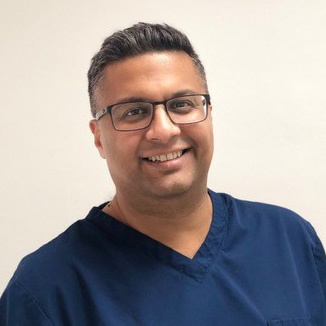Stakeholder perceptions of the GDC: understanding and responding to your views
We have today released the results of research about the views and perceptions of the GDC amongst those we regulate.
The findings don’t make comfortable reading. Perceptions of GDC were more negative (58%) than positive (21%) in 2020, and views amongst the dental team have worsened from when we asked similar questions back in 2018, although views of the GDC did improve slightly amongst dental students and stakeholder representatives.
It’s important to understand what’s behind that so that we can identify what needs to change. The findings tell us that there are three broad groups of issues affecting perceptions, each of which needs a different kind of response. The first is where the system of regulation does not operate as well as it should, where not surprisingly most of the critical focus is on fitness to practise. The second is where GDC’s decisions and actions and the way these are communicated by us are seen as not reflecting the issues and concerns of dental professionals. And the third is that there are very real misunderstandings about GDC’s role and what we are here to do.
Sitting behind that is a fourth issue, which is that perceptions can be formed very indirectly. Only one in five of the respondents to our survey said that direct contact with the GDC was one of the main factors in shaping their perceptions, while half name the experience of colleagues or friends as an important factor.Making the regulatory system work
So our starting point is to make sure that we are operating an effective regulatory system. Our first priority is and always will be public protection, but that must not stop us from recognising the impact of our work on dental professionals and others, or ensuring that we are focused on what is necessary to meet our statutory duties. Perhaps inevitably, that is most an issue in relation to fitness to practise, where the combination of capacity pressures experienced during the pandemic, a relatively inexperienced team, and overly rigid legislation has tested our ability to manage fitness to practise cases effectively. At the moment, this is our biggest challenge, and John Cullinane, Executive Director, Fitness to Practise has set out how we plan to improve the process as much as we can within the limits of the current legislation, including increasing capacity within our casework teams.
But the legislation imposes severe constraints on how far we can go. We are continuing to press the Government to make progress on delivering the reforms on which they consulted earlier in the year. There aren’t any quick fixes, but if the legislative changes are made, that should free us from some of the very prescriptive rules which limit our ability to innovate and improve how we operate, not just in fitness to practise, but across the full range of our operations.
Improving the way we communicate
We need to be clearer about our role and how dental professionals are involved. That includes responding to fair reflections on areas where we can improve, such as the tone of our communications. But it also includes deeper and longer term changes, aiming to continue our approach of the last few years of doing more to make sure things go right, so that there is less need for us to intervene when things go wrong.
More broadly, we will be working on building trust and credibility amongst the professionals and students we regulate, by being responsive to what we’ve been told. We hope our stakeholders will respond too. Those relationships become even more important as we continue developing our upstream agenda, moving towards a regulatory system that is increasingly based on principles rather than prescriptive standards, and preparing to take advantage of the opportunities created by regulatory reform.
Our new Chair, Lord Toby Harris, has started his term with a programme of meetings with a range of key stakeholders to understand the issues faced by the sector and discuss our shared ambitions for the future of regulation. We’ll build on this initial engagement over the coming year to ensure there are opportunities to engage with us through a regular cycle of meetings and events for professionals and stakeholders. We will also expand our student and trainee engagement programme to include more students and education providers.
Understanding our role and responsibilities
But while there is more we can and will do to explain the role we play in the wider system of regulation, it’s important for dental professionals themselves to make sure that they understand the legal and regulatory framework within which they work. Our research tells us, for example, that around half of professionals (48%) thought that the GDC is responsible for setting clinical standards for dentistry, although that is not part of our role. Similarly, only 44% of dental professionals understand our role in setting standards in dental education.
Everybody involved in dentistry – GDC very much included – wants to make sure that patients get safe and effective care and that they can have full confidence in the members of the dental team who provide their care. Professional regulation plays a vital role in underpinning that confidence, so it matters to all of us that GDC plays its part – and is seen to play its part – positively and effectively. We have work to do to make sure that perceptions of what we do match up to that aspiration.You can read the full report in the research section of our website.
 eGDC
eGDC

















